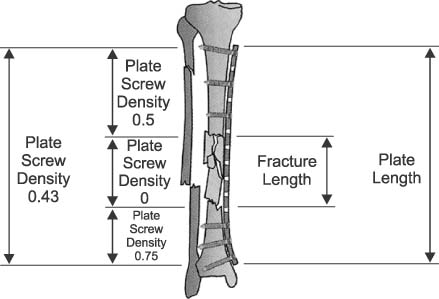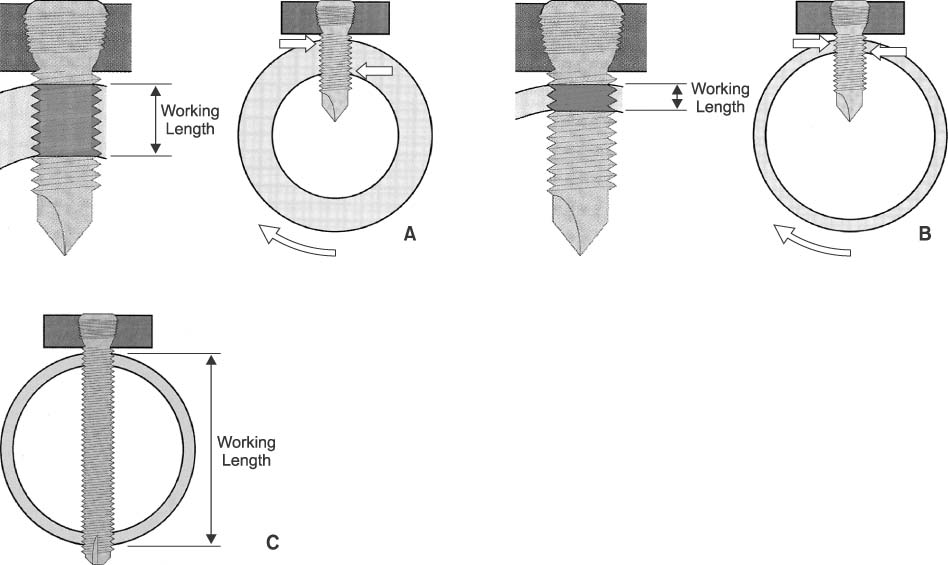Articles
- Page Path
- HOME > J Musculoskelet Trauma > Volume 21(3); 2008 > Article
-
Review Article from Symposium
- Basic Principle of the Locking Compression Plate
- Keun Bae Lee, M.D.
-
Journal of the Korean Fracture Society 2008;21(3):261-265.
DOI: https://doi.org/10.12671/jkfs.2008.21.3.261
Published online: July 31, 2008
Department of Orthopedic Surgery, Chonnam National University Hospital, Gwangju, Korea.
- Address reprint requests to: Keun-Bae Lee, M.D. Department of Orthopedic Surgery, Chonnam National University Hospital, 8, Hak-dong, Dong-gu, Gwangju 501-757, Korea. Tel: 82-62-227-1640, Fax: 82-62-225-7794, kbleeos@chonnam.ac.kr
Copyright © 2008 The Korean Fracture Society. All rights reserved.
This is an Open Access article distributed under the terms of the Creative Commons Attribution Non-Commercial License (http://creativecommons.org/licenses/by-nc/3.0/) which permits unrestricted non-commercial use, distribution, and reproduction in any medium, provided the original work is properly cited.
- 1,239 Views
- 36 Download
- 4 Crossref
- 1. Aguila AZ, Manos JM, Orlansky AS, Todhunter RJ, Trotter EJ, Van der Meulen MC. In vitro biomechanical comparison of limited contat dynamic compression plate and locking compression plate. Vet Comp Orthop Traumatol, 2005;18:220-226.Article
- 2. Ahmad M, Nanda R, Bajwa AS, Candal-Couto J, Green S, Hui AC. Biomechanical testing of the locking compression plate: when does the distance between bone and implant significantly reduce construct stability? Injury, 2007;38:358-364.Article
- 3. Chang SA, Ahn HS, Byun YS, Kim JH, Bang HH, Kwon DY. Minimally invasive plate osteosynthesis in unstable fractures of the distal tibia. J Korean Fract Soc, 2005;18:155-159.Article
- 4. Collinge CA, Sanders RW. Percutaneous plating in the lower extremity. J Am Acad Orthop Surg, 2000;8:211-216.Article
- 5. Frigg R. Development of the locking compression plate. Injury, 2003;34:Suppl 2. B6-B10.Article
- 6. Gautier E, Sommer C. Guidelines for the clinical application of the LCP. Injury, 2003;34:Suppl 2. B63-B76.Article
- 7. Haidukewych GJ. Innovations in locking plate technology. J Am Acad Orthop Surg, 2004;12:205-212.Article
- 8. Niemeyer P, Südkamp NP. Principles and clinical application of the locking compression plate (LCP). Acta Chir Orthop Traumatol Cech, 2006;73:221-228.Article
- 9. Perren SM. Evolution and rationale of locked internal fixator technology. Introductory remarks. Injury, 2001;32:Suppl 2. B3-B9.
- 10. Sim JC, Chung NS, Hong KD, Ha SS, Kang JH. Treatment of fractures of the distal radius using locking compression plate. J Korean Fract Soc, 2005;18:100-104.Article
- 11. Sommer C, Gautier E, Müller M, Helfet DL, Wagner M. First clinical results of the Locking Compression Plate (LCP). Injury, 2003;34:Suppl 2. B43-B54.Article
- 12. Wagner M. General principles for the clinical use of the LCP. Injury, 2003;34:Suppl 2. B31-B42.Article
- 13. Wagner M, Frenk A, Frigg R. New concepts for bone fracture treatment and the Locking Compression Plate. Surg Technol Int, 2004;12:271-277.
REFERENCES
Fig. 1

Because the plate is not compressed on the bone, the blood supply will be preserved in LCP (A) than LC-DCP (B).

Fig. 2
(B) Dynamic compression can be achieved by eccentric insertion of standard screw at this hole.

(A) Conical thread allows a secure fixation of the locking head screw.

Fig. 3
(B) Arrangement of the combination holes.

(A) Once the metaphyseal fragment has been fixed with locking head screws, this portion can be compressed to the shaft with standard screws at compression hole.

Fig. 4

Plate span ratio and plate screw density in bridge plate. Plate span ratio is the quotient of plate length and overall fracture length. Plate screw density is the quotient formed by the number of screws inserted and number of the plate holes (From Gautier E, Sommer C: Injury 34(Suppl 2), 2003).

Fig. 5
(B) In osteoporotic bone, working length of monocortical screw is insufficient due to thin cortex and under torque the bone thread soon will wear out and secondary displacement and instability will occur.
(C) In osteoporotic bone the bicortical screw is recommended because of the longer working length leading to a much higher torque resistance (From Gautier E, Sommer C: Injury 34(Suppl 2), 2003).

(A) In normal bone, working length of monocortical screw is sufficient enough to withstand rotational displacement.

Figure & Data
REFERENCES
Citations
Citations to this article as recorded by 

- CASE STUDY OF A DISTAL FEMUR TI6Al4V LOCKED COMPRESSION PLATE FAILURE SURFACE INVESTIGATION AND FINITE ELEMENT ANALYSIS
MURAT CAN, MEHMET AKIF OYMAK, SERDAR KOLUAÇIK, ERKAN BAHÇE, ÖMER FARUK UZUNYOL
Journal of Mechanics in Medicine and Biology.2024;[Epub] CrossRef - Evaluation of Mechanical Performance of Fibula Trauma Plate via EBM and SLM-Based Additive Manufacturing
Hyo-Bok Jeong, Sung-Jun Park
Journal of the Korean Society of Manufacturing Technology Engineers.2021; 30(2): 148. CrossRef - Mechanical and Physical Characteristics Analysis of Radius Trauma Plate by EBM Additive Manufacturing
Kwun-Mook Lim, Sung-Jun Park
Journal of the Korean Society of Manufacturing Technology Engineers.2020; 29(2): 147. CrossRef - Treatment of Femur Supracondylar Fracture with Locking Compression Plate
Seong Ho Bae, Seung Han Cha, Jeung Tak Suh
Journal of the Korean Fracture Society.2010; 23(3): 282. CrossRef
Basic Principle of the Locking Compression Plate





Fig. 1
Because the plate is not compressed on the bone, the blood supply will be preserved in LCP (A) than LC-DCP (B).
Fig. 2
(A) Conical thread allows a secure fixation of the locking head screw.
(B) Dynamic compression can be achieved by eccentric insertion of standard screw at this hole.
Fig. 3
(A) Once the metaphyseal fragment has been fixed with locking head screws, this portion can be compressed to the shaft with standard screws at compression hole.
(B) Arrangement of the combination holes.
Fig. 4
Plate span ratio and plate screw density in bridge plate. Plate span ratio is the quotient of plate length and overall fracture length. Plate screw density is the quotient formed by the number of screws inserted and number of the plate holes (From Gautier E, Sommer C: Injury 34(Suppl 2), 2003).
Fig. 5
(A) In normal bone, working length of monocortical screw is sufficient enough to withstand rotational displacement.
(B) In osteoporotic bone, working length of monocortical screw is insufficient due to thin cortex and under torque the bone thread soon will wear out and secondary displacement and instability will occur.
(C) In osteoporotic bone the bicortical screw is recommended because of the longer working length leading to a much higher torque resistance (From Gautier E, Sommer C: Injury 34(Suppl 2), 2003).
Fig. 1
Fig. 2
Fig. 3
Fig. 4
Fig. 5
Basic Principle of the Locking Compression Plate

 E-submission
E-submission KOTA
KOTA TOTA
TOTA TOTS
TOTS
 Cite
Cite

